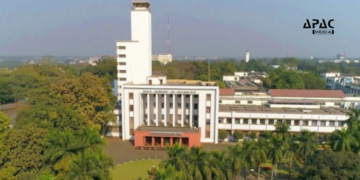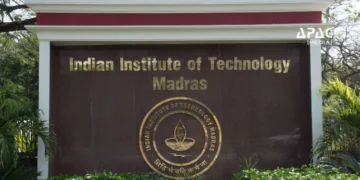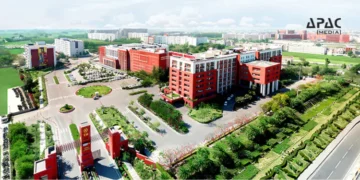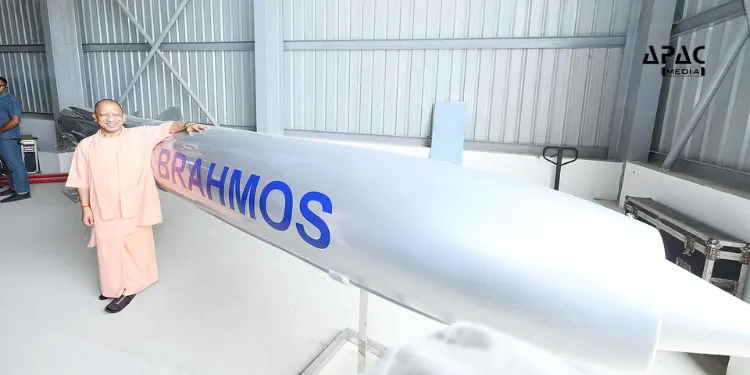Lucknow: Uttar Pradesh is fast transforming into a powerhouse of defence manufacturing, with six key cities, Lucknow, Kanpur, Jhansi, Agra, Aligarh, and Chitrakoot, spearheading India’s ambitions for self-reliance in the sector.
Anchored by the Uttar Pradesh Defence Industrial Corridor (UPDIC), these cities are witnessing rapid industrial development, attracting investments worth Rs 28,475 crore and laying the groundwork for next-generation defence technologies ranging from missiles and drones to advanced radar and robotic systems.
BrahMos missile manufacturing facility in Lucknow is part of the broader Uttar Pradesh Defence Industrial Corridor (UPDIC), which has so far attracted investments worth Rs 28,475 crore. As many as 57 companies have secured land for their operations, while 87 more are in the pipeline, indicating strong industry interest.
The UPDIC, announced in the 2018–19 Union Budget alongside a similar corridor in Tamil Nadu, spans six strategically chosen cities — Lucknow, Kanpur, Jhansi, Agra, Aligarh, and Chitrakoot — selected for their access to expressways and existing or upcoming air connectivity. Among future infrastructure upgrades, Jewar near Aligarh is set to host an international airport, while new airstrips are planned in Jhansi and Chitrakoot.
In Lucknow, the newly launched BrahMos unit marks the beginning of high-end cruise missile production, with over 100 units slated to be developed initially. The facility will also manufacture drones and ammunition and will be supported by an integrated testing centre. It is expected to create around 3,000 direct and 10,000 indirect employment opportunities.
Meanwhile, Kanpur is home to Asia’s largest ammunition manufacturing complex, which is spread across 250 acres and is being developed by the Adani Group. The plant will produce 41 categories of defence equipment, including drones, small arms, and light aircraft. The project’s current scope may expand further, pushing the total investment to around Rs 3,000 crore.
Jhansi’s contribution to the corridor is anchored by a 531-hectare facility named after the late Chief of Defence Staff General Bipin Rawat. The site hosts 16 firms, with Bharat Dynamics Limited leading the charge through a Rs 140 crore missile production plant. The firm’s total investment in the area is part of a broader Rs 400 crore plan, alongside participation from global defence company Saab AB and several Indian manufacturers.
Agra, where Bharat Heavy Electricals Limited (BHEL) is setting up a Rs 400 crore facility for radar and communication systems over 123 hectares, is also poised to become a hub for electronic warfare technologies. The project is in the early stages of development, with job creation estimates yet to be finalised.
Aligarh has emerged as a centre for drone and counter-drone technology. A total of 24 companies have been allocated land here, including Verwin Defence, Smith & Wesson (known for revolvers and pistols), and Amit Industries (involved in radar systems manufacturing).
Chitrakoot is fast shaping into a comprehensive defence manufacturing zone. With 85% of land acquisition already completed, the region is witnessing development in drones, helicopters, tanks, robotic systems, and even missile production, supported by a planned firing range. Notably, Anshul Metal and Polymers is investing a massive Rs 6,000 crore in the region, reflecting strong private sector participation.
As India pushes for self-sufficiency in defence manufacturing, the UP corridor is emerging as a cornerstone of this effort, offering economic and strategic advantages while driving local employment and infrastructure development.

































































Discussion about this post